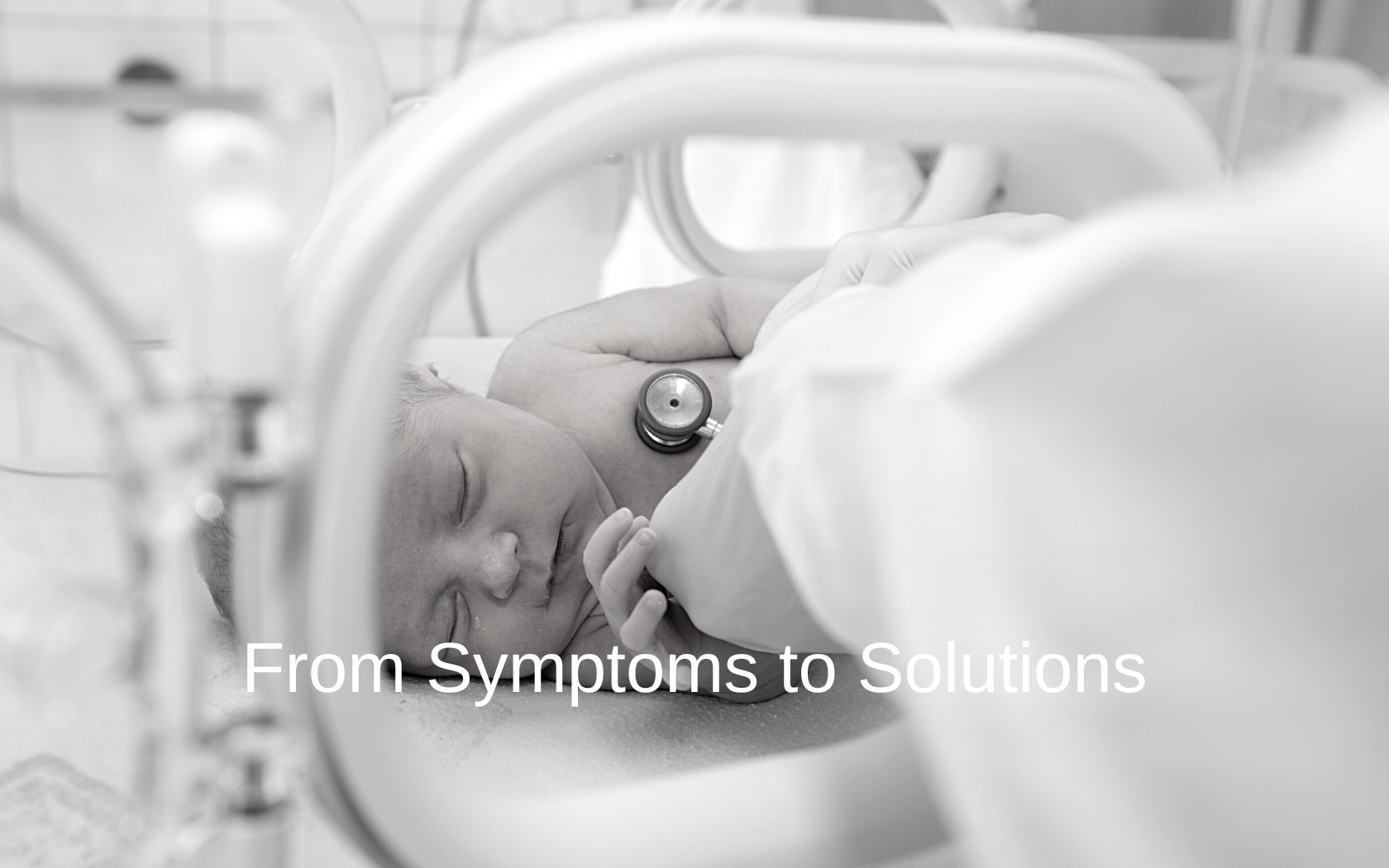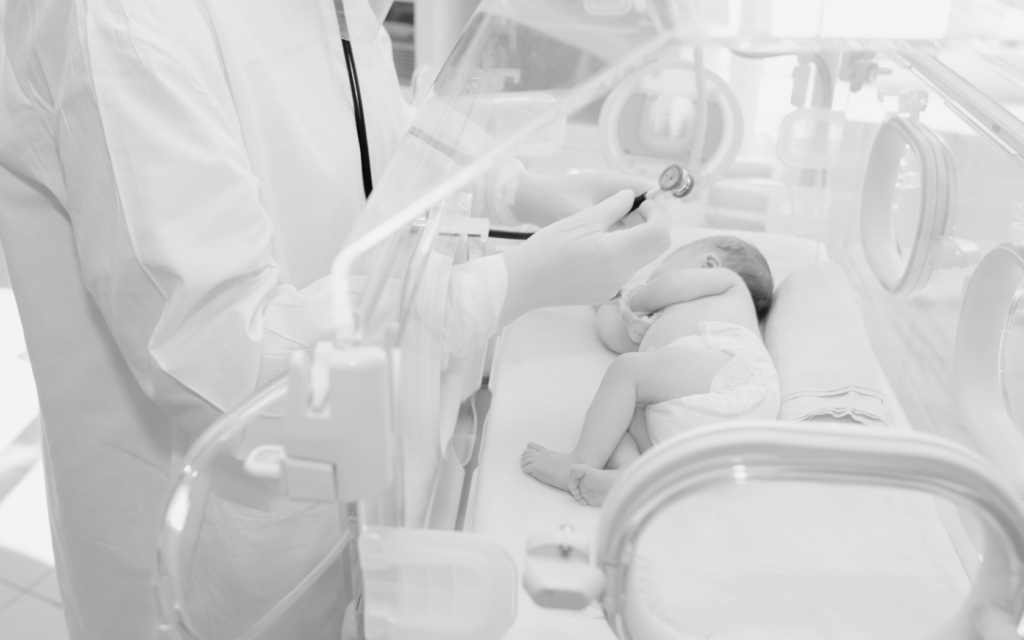Blue isn’t a normal color for skin. But that was Baby Sophie’s hue shortly after she was born. Because of birth asphyxia, Sophie was born blue and unresponsive. At some point during delivery, she didn’t get enough oxygen.
Below, we’ll share more of Sophie’s story, and provide helpful information about newborn asphyxia: its causes, symptoms, treatment, and more.

What is Birth Asphyxia?
Birth asphyxia is a condition where a newborn experiences insufficient oxygen and blood flow around the time of birth.
Severe asphyxia can damage the baby’s brain and other organs. This can lead to long-term health issues like developmental delays and neurological impairments.
Other terms for birth asphyxia are:
- Neonatal asphyxia
- Newborn asphyxia
- Perinatal asphyxia
Prevalence and Prognosis
In developed countries, birth asphyxia occurs in 2 per 1,000 births. It’s more common in developing countries, or places with little access to neonatal care.
The prognosis for babies with mild asphyxia is good, as long as they receive early medical intervention. But severe asphyxia is a serious condition that can cause permanent injury and death. Data shows that 15-20% of infants with asphyxia die in the neonatal period. Of those who survive, 25% have neurological issues.
What Causes Birth Asphyxia?
In Sophie’s case, the cause of birth asphyxia was meconium aspiration. She breathed her first bowel movement into her lungs while still in the womb. But that’s not the only cause of neonatal asphyxia.
Other causes include:
- Umbilical cord complications, like prolapsed cord, cord compression, or a knotted cord
- Placental problems, such as placenta previa or placental abruption.
- Prolonged or difficult labor.
- Shoulder dystocia (when the baby’s shoulder gets stuck behind the mother’s pelvis).
- Maternal health issues, like hypertension, infection, or diabetes.
- The mother’s breathing is affected (this can happen from an adverse reaction to the anesthesia, for example).
- Trauma to the baby’s head or body during delivery.
- The mother used certain medications or substances during pregnancy.
Certain factors can put babies at higher risk for asphyxia, such as:
- Certain genetic conditions in the baby
- Multiple births
- Premature birth
- Insufficient monitoring of the baby’s well-being during labor
- Abnormal birth position, such as breech
Symptoms of Birth Asphyxia
Signs and symptoms include, but aren’t limited to:
- Difficulty breathing
- Cyanosis (blue or grayish skin)
- Slower than normal heart rate
- Weak or absent cry
- Poor muscle tone (floppiness in the baby’s body)
- Drowsiness or lethargy
- Poor reflexes
- Seizures (in severe cases)
- Difficulty feeding
These symptoms can occur right after birth or within the first few hours. They can range from mild to severe. Their severity depends on the degree and duration of oxygen deprivation.

Treatment for Birth Asphyxia
Thanks to the swift actions of her medical team, Sophie survived her ordeal with asphyxia. Today, she doesn’t suffer from any long-term conditions.
The treatment Sophie received right after birth included cooling treatment. It’s a fairly new method that helps minimize brain damage after oxygen deprivation. It involves carefully lowering the baby’s body temperature for about 72 hours. This can reduce metabolic activity in the brain and protect against further damage. After that, doctors bring the baby’s temperature back up.
Other treatment methods for neonatal asphyxia include:
- Resuscitation
- Oxygen therapy
- Intravenous fluids
- Blood transfusion (in cases of severe anemia or blood loss)
- Neuroprotective medications
Complications from Birth Asphyxia
Birth asphyxia isn’t a “wait and see” situation. Without prompt medical intervention, a baby can develop severe long-term complications. Here are some examples:
- Cerebral Palsy: A group of neurological disorders affecting muscle coordination and movement.
- Hypoxic-Ischemic Encephalopathy (HIE): Brain damage from oxygen deprivation.
- Intellectual Disabilities: Such as cognitive impairments, and learning disabilities.
- Seizures and epilepsy
- Emotional and behavioral challenges
- Developmental Delays: The baby will have trouble reaching developmental milestones, including speech and motor skills.
- Hearing or vision impairments
- Respiratory distress syndrome (RDS) and lung damage
- Heart complications
- Gastrointestinal disorders.

When Birth Asphyxia Complications Are a Doctor’s Fault
Was your child diagnosed with cerebral palsy or another disorder after experiencing birth asphyxia? If so, you may have grounds to sue for negligence. It’s possible that somewhere down the line, someone on the medical team made a mistake.
One devastating error our lawyers have encountered is negligent fetal heart monitoring. Doctors sometimes don’t take the time or make the effort to keep an eye on the baby’s heart rate. That can have major consequences, including asphyxia and HIE. With the help of a birth asphyxia lawyer, you can hold negligent parties responsible for these devastating errors. You can also obtain compensation to help pay for your child’s treatment. To learn more, or to schedule a free appointment with one of our experts, contact us here.




